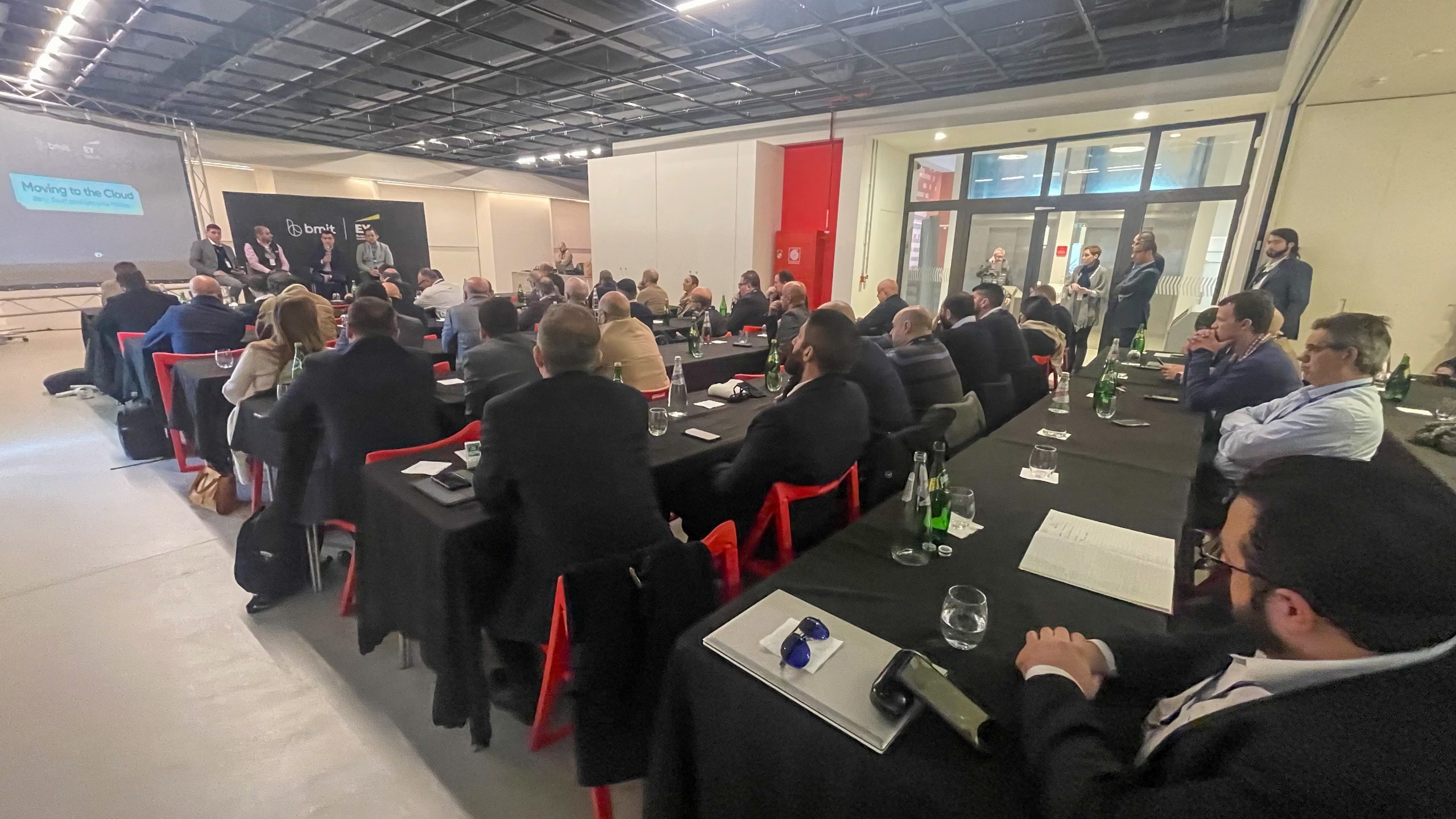Hybrid cloud is becoming increasingly popular as a solution for organisations looking to leverage the benefits of both public and private cloud. With the growth of data comes the challenge of managing it effectively and ensuring its security. In a hybrid cloud environment, the combination of on-premises data and multiple cloud services requires a cohesive approach to data governance and security.
These were the three main themes discussed during a very well attended half-day conference organised by BMIT and EY Malta: ‘Moving to the Cloud – Why trust and security matter’.
Gordon Bezzina, CTO of BMIT, was the first keynote speaker. He offered a comprehensive overview of cloud technology advancements and highlighted the three primary reasons for organizations to adopt cloud technology: cost-effectiveness, agility, and enhanced customer experience. Bezzina emphasized that there is no universal approach, and each organization can achieve its unique needs by embracing various elements of cloud technology to maximize benefits.
The following speaker, Daniel Cuschieri, a Senior Manager of Technology Consulting at EY Malta, took the stage and presented on the topic of cloud computing. He started by explaining the basics of cloud in the IT industry, including various types of cloud computing services and how they have transformed traditional IT. Daniel then delved into the three phases of an organization's cloud migration journey, which includes strategy, adoption, and optimization and economics. For each phase, he highlighted the importance of a cloud governance framework, which offers comprehensive guidance for organizations throughout their cloud journey and spans across the entire cloud lifecycle.
In the final presentation, Dr. Dimitrios Patsos, a security expert from Microsoft, delved into the crucial connection between trust, innovation, and security in the multi-cloud and hybrid environments. He highlighted the reality of cybercrime being a thriving industry and emphasized that cybersecurity was slowly becoming a top priority for many boards. The threat landscape, he noted, was shifting as hackers were increasingly targeting users' identities rather than traditional perimeters. Dr. Patsos then went on to stress the significance of innovation in security as a means of building trust. He provided an overview of the various security architectures employed by Microsoft to ensure maximum protection. He emphasized the need for organizations to stay ahead of the curve and embrace innovation in security to safeguard their businesses.
Panel Discussion
Businesses should see compliance as an enabler, rather than a hindrance, because it can help them improve their operations, increase efficiency, and reduce risks. And more importantly, protect their clients and their data.
This was one of many interesting points raised during a panel discussion with three expert panellists – BMIT’s Sean Cohen, EY’s Michael Azzopardi and Microsoft’s Christos Giannakis-Bompolis.
With the cloud becoming more complex, regulatory frameworks guarantee consistency and managed expectations. They also protect customers.
That said, the panellists agreed there was always room for improvement.
Giannakis-Bompolis pointed out that security is a shared responsibility and both vendor and customers had a role to play. A change in mindset was required and customers should not rely on the vendor for their security needs. Azzopardi focused on the data and how companies view data. He said there was a need for structured data governance with clear classification and ownership of the data as well as the integration of controls as needed to protect the data. According to Cohen, awareness on compliance and regulations had to improve and, in turn, gain a better understanding of the data.
Asked to define the next 24 months, one of the biggest developments would be the impact data had on business and cloud adoption, particularly in the context of Internet of Things (IoT) and the growing use of artificial intelligence (AI) in business and industry. Data is key and will be an accelerator for cloud option. “Data is going to drive organisations to the cloud and use the capabilities of AI,” Azzopardi said. From a security perspective, AI will be the next big thing in security solutions. “AI is here and is a huge opportunity. AI will be a driver as organisations use intelligence as a defence,” Giannakis-Bompolis added. Cohen said the Cloud will become a big player as the IoT and data processing become critical. “I believe we will see IoT handling critical data at source, for example in relation to hospital equipment, but analysis of the data will be processed later in cloud.”
Moving to the cloud is not suitable for all, but those who do require a trustworthy provider who meets three requirements: reliability, scalability, and compliance. The provider must be committed to offering the best service while also having the ability to scale and assist customers in achieving compliance. It is crucial for businesses to align their cloud strategy with their business objectives, technology stack, and data architecture. To do this effectively, seeking guidance from experts is essential.
The choice of provider should be guided by a vendor’s local partners. According to Microsoft, a local partner, like BMIT Technologies, can provide skilled professionals with knowledge of the local market, and assist customers in comprehending the range of available products to meet their cloud and security needs.

